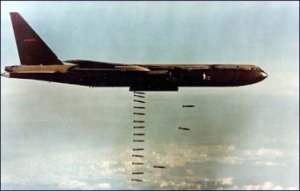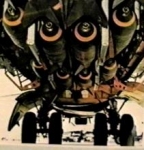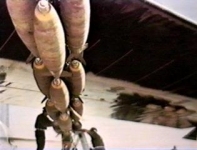
Home
FACs
More About FACs
The AO
A Shau Valley
• A Shau SF Camp
Hué
• Hué Cit Airfield
• MACV Compound
• LCU Ramp
• Hué Goose
Battle of Hué (Tet 1968)
• Trail FACs
The Missions
Visual Recon
• Sunken Sampan
Close Air Support
• CAS Munitions
• Rules of Engagement
• TACS
• Battle at Hua Cu
Interdiction
• McNamara Line
• Choke Points
Ranch Hand
Trail Dust Mission
Arc Light
SAR
Hammer 51 Rescue
Search for Jolly 23
• Msn Reports
• Search Area Map
• Search Rejoined
• Link to Past
Jungle Penetrator
Legacies
Aircraft
O-2A
Glossary
Resources
Contact
Return to Top
|

| |

Arc Light bombing mission impacting.
USAF photo courtesy of the National Museum of the USAF
Operation Arc Light was the code name given to the use of B-52 strategic bombers in Southeast Asia.
In 1964 U.S. and South Vietnamese intelligence sources began to detect regular North Vietnamese Army (NVA) units operating in base
areas inside the Republic of Vietnam.
The U.S. military evaluated ways to counter this development, and the resulting proposals leaned heavily on the concepts of air mobility and airpower.
After World War II, even into the nuclear era of Massive Retaliation, the Air Force had maintained an interest in the use of heavy bombers
in a conventional role.
U.S. Air Force planners recognized that it would take massive amounts of concentrated firepower to disrupt troop concentrations in jungle areas.
As the war in Southeast Asia intensified, the Air Force looked to the Strategic Air Command bomber fleet to provide this massed firepower
and selected the B-52 Stratofortress for this role.

B-52D Stratofortress
USAF photo courtesy of the National Museum of the USAF
The eight-jet B-52 first flew in 1952. Designed as a high altitude nuclear bomber, the Stratofortress served almost 40 years as
the mainstay of the bomber leg of the U.S. nuclear triad.
Affectionately nicknamed by its aircrews the Buff (Big Ugly Fat Fellow), the B-52 has shown its
versatility by adopting to the low altitude penetration role in the Cold War, then dropping iron bombs in Vietnam.
The B-52 still soldiers on, most recently as a true CAS aircraft with precision guided weapons in Afghanistan and Iraq.
Click here for a history of the B-52 Stratofortress
For its Arc Light role in Vietnam, the B-52D models were given the "Big Belly" mod to carry up to 108 bombs -- 84
Mk 82 (500 pounds) internally and 24
M-117 (750 pounds) on underwing pylons.
| |
 |
 |
|
| |
B-52D Bomb Bay |
B-52D Underwing Pylon |
|
Photos courtesy of War Stories
The first Arc light missions were flown from Andersen AFB on Guam beginning on June 18, 1965.
In 1967 U Tapao Royal Thai Air Base was added both to relieve the crowding at Andersen and to reduce the flight time to targets in Vietnam.
A year later Kadena AB in Okinawa became the third Arc Light base to support the increasing operational tempo that peaked in 1968.
Click here for Operation Arc Light statistics.
In addition to bombing missions against enemy base areas, the B-52's were used in a close support role in major battles including the
Ia Drang Valley and
the siege of Khe Sanh.
Arc Light missions were flown over the Ho Chi Minh Trail in Laos and selectively in the southern part of North Vietnam.
The B-52 force played a major role in
Operation Linebacker (Apr-May 1972) and the Christmas 1972
Operation Linebacker II .
Click for an extended article on Linebacker II (Air Force magazine)
Operation Arc Light video
Additional links on Operation Arc Light:
Air Force Magazine (Jan 2009)
• More
History of 306th Bomb Wing participation in Operation Arc Light
Analysis of the use of airpower (including B-52's) at Khe Sanh
Ranch Hand
Return to Top
SAR
|
|
|





